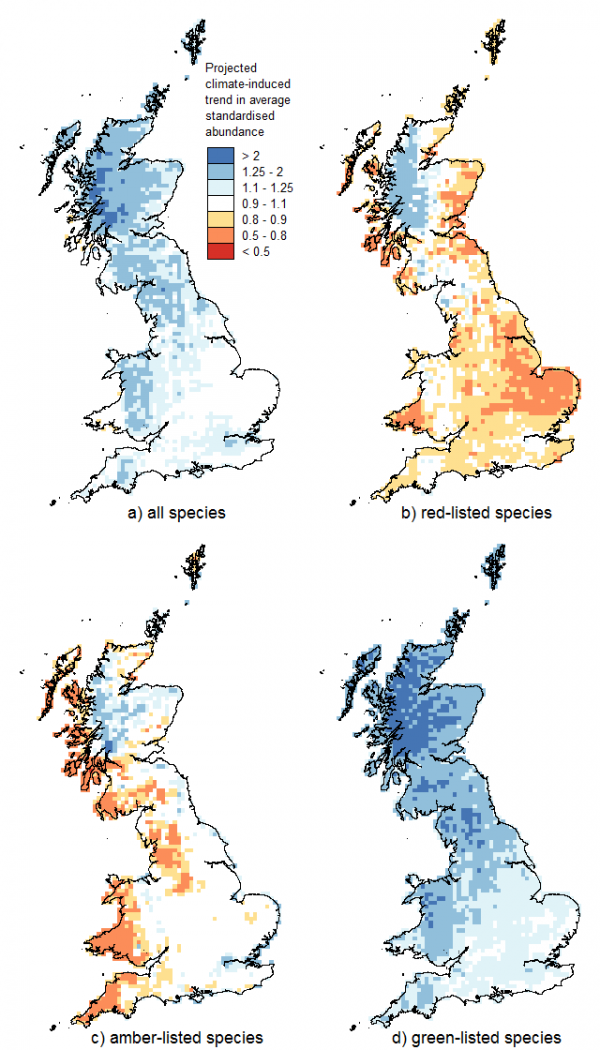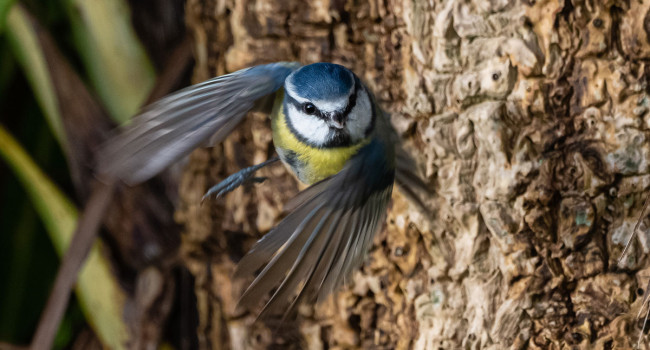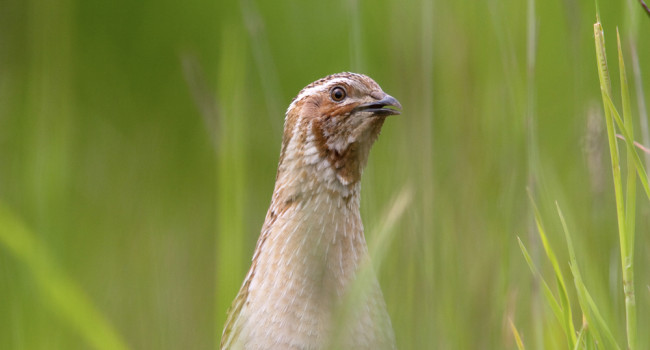Projected reductions in climatic suitability for vulnerable British Birds

Author(s): Massimino, D., Johnston, A., Gillings, S., Jiguet, F. & Pearce-Higgins, J.W.
Published: October 2017
Journal: Climatic Change Volume: 145
Digital Identifier No. (DOI): 10.1007/s10584-017-2081-2
Researchers have long investigated the effects that climate change might have on species’ future ranges. However, for the first time, scientists at BTO have used abundance data to project the future distribution and abundance of more than one hundred breeding birds in Great Britain in order to assess how the whole bird community might change as a consequence of climate change.
There have been numerous studies on species’ future distributions, where presence-absence or presence-only data were used to predict where species might occur in future in response to climate change. These studies are very useful to identify the most vulnerable species and habitats and therefore aid conservation prioritisation. However, significant population changes can occur without obvious changes in range. Such trends can only be identified using abundance data detailing how bird numbers vary in space and time. Scientists at BTO had previously tested future projections using abundance data for four selected species and in Special Protection Areas. In this latest study, we have produced future projections of distribution and abundance for 124 breeding bird species, including some which are not yet present in Great Britain, but could potentially colonise if they take advantage of higher temperatures. Data from the Breeding Bird Survey (BBS) and its French counterpart (the Suivi Temporel des Oiseaux Communs) were used in this research. French data were included to better quantify the species’ response to climate conditions found in France but yet to occur in Great Britain, and to consider potential colonists such as Melodious Warbler and Tawny Pipit.
Future climate change was projected to result in significant population increases for 55 species and significant population declines for 11 species by 2080. This may apparently look like good news, but in reality 6 of the 11 species that are projected to decline are already red-listed in Britain for their recent population decreases (Grey Partridge, Curlew, Grasshopper Warbler, Ring Ouzel, Pied Flycatcher, and Yellowhammer), and 4 are already amber-listed (Red Grouse, Snipe, Willow Warbler, and Meadow Pipit). In contrast, 40 of the 55 species that are projected to increase are either currently green-listed or not yet breeding in Britain. This highlights how climate change will more seriously hit those species that are already of concern.
As a consequence of these responses to climate change, different regions of Britain will see net gains and losses in species abundance. Our projections show that the largest gains in abundance will mostly be in northern and north-western Scotland and other smaller areas of western Britain. The south-east show apparent stability, but this is a result of large projected declines in red-listed species and compensating increases in green-listed species. Because of all these changes, community turnover will be high throughout Great Britain, but in particular in the west of Scotland, where changes in abundance of species that are already present will prevail.
The analytical methods used provide an important framework to make projections of impacts of climate change on species abundance, rather than simply projected range changes. It has shown us significant changes in community composition that would have been invisible to us had we only used bird distributions. These projections will help conservation practitioners identify species that most urgently require mitigation and adaptation measures and target where those measures may best be adopted.










Share this page